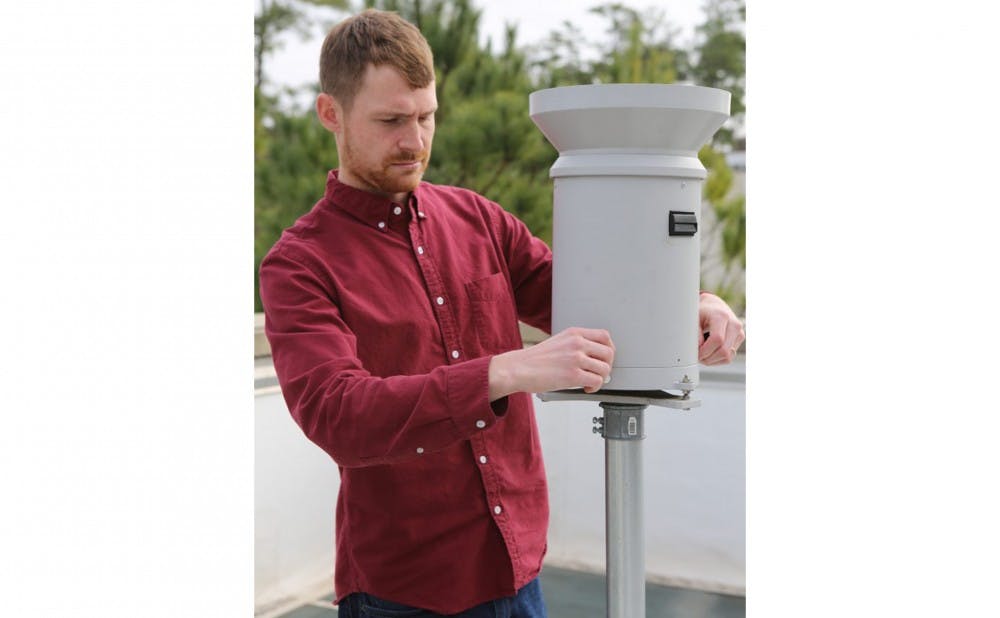A rooftop observatory established by the Barros Research Group aims to precipitate a better understanding of the water cycle.
Funded by Duke and the National Aeronautics and Space Administration, the observatory was created by Ana Barros, James L. Meriam professor of civil and environmental engineering, alongside a team of graduate students from the Pratt School of Engineering. Just last week, they added a meteorological particle spectrometer to an inventory of instruments that include a tipping bucket rain gauge, a micro rain radar and a disdrometer. The suite of instruments is perched atop the Fitzpatrick Center for Interdisciplinary Engineering, Medicine and Applied Sciences.
Barros explained that the project aims to shed more light on the microphysics of light rainfall—which has been traditionally ignored in climatology, even though it potentially accounts for as much as 30 to 50 percent of available freshwater.
“Traditional measurements cannot measure [light rainfall] at all or if they do, the uncertainty is very high,” Barros wrote in an email.
Using the data gathered from these instruments, Barros said she hopes this research will guide models to improve the representation of the lifecycle of cloud drops and rain drops in the atmosphere. Other applications of their research include informing weather prediction, understanding moist processes in the atmosphere, quantifying soil erosivity and incoming solar radiation. The research team also studies solar energy and the Earth’s energy budget.
Jonathan Holt—a Ph.D. candidate in the civil and environmental engineering and one of five students on the research team—noted that he was attracted to Duke precisely because of the opportunity to work with the state-of-the-art laboratory that Barros has established.
“It tells us when it’s raining, where are the clouds, where's the water falling and what’s the physics behind that,” he said.
Holt noted that he and Lauren Lowman—another civil and environmental engineering Ph.D. student on the team—do not have backgrounds in engineering. Holt earned his bachelor’s degree in biochemistry before coming to Durham, while Lowman earned her undergraduate degree in public policy studies at Duke.
“That’s one of the things that I love about Duke—Duke was willing to take me on,” Holt said. “I think for them that’s a way to diversify the department."
Besides the equipment at FCIEMAS, the team owns more than 30 instruments at research sites including Peru and the Great Smoky Mountains. Having the ability to collect a dense network of physical measurements from mountainous regions with few people is an advantage the team has, Holt explained.
“That’s sort of what makes us unique—nobody else has those kinds of observations,” he said. “You can look at the weather channel and think that you know if it’s going to rain or not, but you don’t really know. We do. "
Get The Chronicle straight to your inbox
Signup for our weekly newsletter. Cancel at any time.

